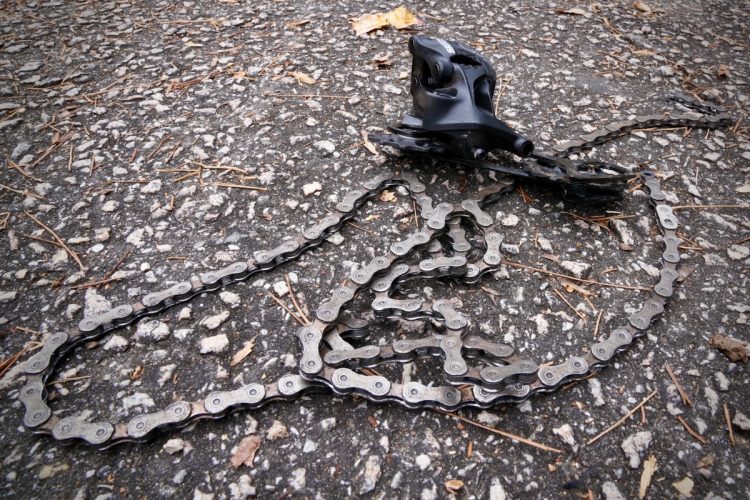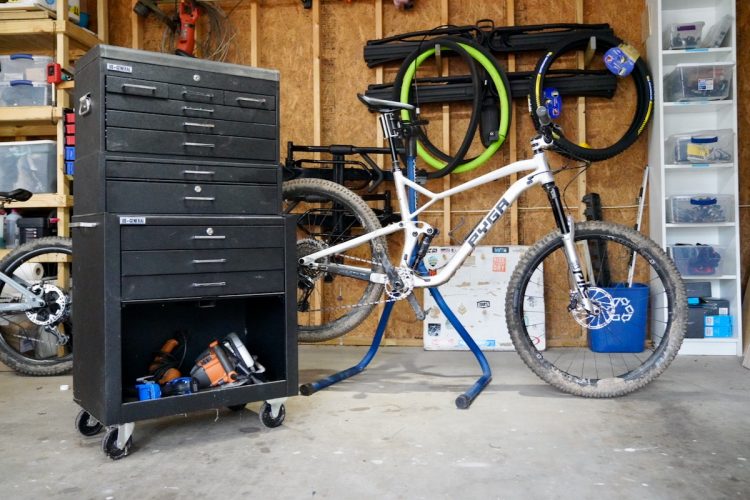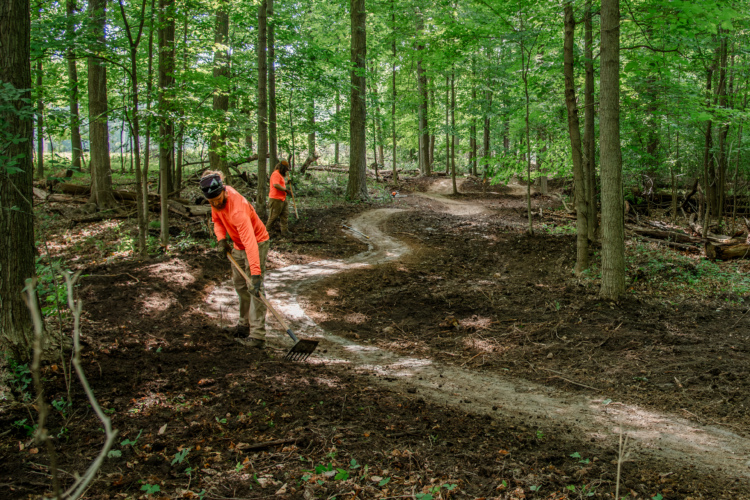
Several animals use tools, like the octopus with its coconut shelter and stone fence. The way we humans use them is one of the things that makes us a unique species. That, and the deep feelings we have about our instruments and the things they create or repair. Some of you might have a special tool hanging around that was held by a great-grandparent. One that’s heavier with sentimental connection and the pangs of mortality than it is with mere gravity.
Some of these gadgets are designed to outlast us, making quality tools worth their additional asking price. If you’re going to turn bolts with a hex key for sixty years, why not own one with tight tolerances that prevent stripped fasteners and a handle that was meticulously studied and shaped for its comfort and confidence in the hand? These are some of the characteristics that drive design for Jason Quade at Abbey Bike Tools in Bend, Oregon.
The company name came up as many do, between friends drinking beers after hours. Quade and a friend made 10-15 steel bike frames under the same label before transferring the name to the tool business.
Prior to starting Abbey, Quade was a professional race mechanic for a number of years, chasing around Pro-Tour teams in a van and maintaining their feather-weight machines. Before that venture, he worked as a welder in a large industrial capacity. He designed and welded the first tool while still working as a mechanic, and Quade says that starting the tool company was a total accident.

A friend called him up one day and asked if he had a Shimano lock-ring tool and a Shimano quick-release skewer. He did. The friend then asked if the skewer nut would fit inside the cassette tool. It did. The friend then said, “drill a hole in that, weld a handle to it, and send it to me. Let me know what I owe you.” Quade made the tool and saw that it was a petty good idea. Pro mechanics who are working on a lineup of bikes could now remove the cassettes without also removing the quick-release skewers, which cut a step out of the process and likely saved some lost parts.
From there he ordered another 25-30 HG lock-ring tools and bored them out on a lathe, welded handles in place, and coated them in his garage with a black oxide kit. Those first tools were all given away to fellow racing mechanics who Quade knew from working the circuit. He thought that would be the end of it. A few happy race mechanics with one less step in their process.
One day Quade received a random call from someone he’d never met, asking “hey, are you that guy that makes that thing?” He thought to himself “I am a person who’s made many things in my life” and asked, “what is it you’re referring to?” The caller replied “that lock-ring thing. I have to have one of those.” That discussion led Quade to decide it was time to start making tools in earnest. He contacted a machine shop, selected top-shelf materials for Shimano and Campagnolo lock-ring tools, and kept the handle welding for himself.
That first batch consisted of about 100 pieces, and they sold out in a few months. The final two tools went journalists Nick Legan at Velonews and Zach Overholt at Bikerumor. With no website and zero marketing, Quade says this was maybe one of the worst company launches in bike industry history. The two press reviews came back overwhelmingly positive, with Legan calling it “an heirloom quality tool.”

The next phase of business development included people simply asking what else Quade makes. His reply: “Well shit I don’t know. What do you want me to make”? So he set about looking for needs. Shimano had just come out with a new bottom bracket that needed a smaller tool, and the only one available was made of plastic. Many of the successive instruments worked similarly, with Quade and a slowly growing team seeing innovations in the bike industry that needed to be paired with quality tools.
During this early growth Quade was still traveling around working as a mechanic with professional racing teams, and the hands-on experience he endured certainly pays off in his product development today. The legal entity of Abby was minted in April of 2010, but the experiential elements that would help Quade form some of the best tools in the industry took place long before.
The first factory that Quade filled with machines lasted about three years before the company outgrew it, and they are currently looking for a space with greater electrical power capacity to run the various machines. He hopes this will be the final move under his watch, as the company has reached its maximum size in terms of the quality and culture that he wants Abbey to be known for. Quade says “for somebody that didn’t start out with the intention of being an entrepreneur or being self-employed, it’s gotten pretty sizeable.”
Abbey Bike Tools was alone in the space of top-quality bike tools that are designed for shop mechanics and home mechanics alike, and that situation hasn’t really changed. While there are loads of large companies making tools out there, those with British-racing-green handles remain the favorites among most career bike mechanics.
Since Quade was a pro wrench before making tools, we made sure to ask what his favorite tools were back in the day. “Knipex is definitely my go-to plier brand. Their Pliers Wrench is pretty ubiquitous amongst traveling mechanics. People often wonder, ‘why do you need that on a bike?’ And, it’s kind of a catchall. You don’t really need it for anything, but it’s good for everything. Then, P-handle hex tools from Mac Tools. They have a grip that feels more natural to me and works with higher torque.” He mentioned several other tools, but as expected he clearly knew they could be made better.

New tools are added to the Abbey lineup via requests and suggestions from their ambassador program which of course includes some career mechanics, in addition to customer requests. Quade intentionally selects ambassadors who work with different genres or specialties in the bike world to make sure the company receives a wide variety of requests. Some of the innovations are focused on making an existing tool better, like the Abbey Crombie lock-ring tool that has a 12mm piloting-pin to keep it from slipping during use. While there are multiple examples of innovations and improvements on existing tools, what the brand doesn’t do is what Quade calls “me too” tools. He has no interest in creating a tool that’s just as good as what’s available. If it can’t be made better, Abbey doesn’t bother making it.
The Oregon-based instrument manufacturer is well known for precise tolerances and smooth moving parts, so we asked Quade what it takes to make the fluid feel of something like the Decade chain tool. We learned a lot from his reply. “Threads can be very simple. They’re used to hold the world together. Most threads in the world are in classes 1, 2, and 3. The class 2 is like 80%, class 1 is like Ikea furniture, and class 3 is like Army/Navy or aerospace grade. Those classes refer to plusses and minuses of the facets on the major and the minor thread, and then, how much clearance is between the male and female thread.”
Taking the Abbey chain tool for example, “the clearance on the chain tool, because it’s a lead screw and not a bolt, the thread clearances are a class 3+. So we measure the major and the minor, which is kind of like the peak and the valley of the thread. Then we have to coat it, and even though that coating is like a 5-micron film, it still adds something. Then, once we were happy with them we had to have custom gauging made which costs two thousand dollars. The end result is that we have a place where we can reliably produce those parts.”

So how about tolerances related to other brands’ products, like a bolt head? Quade uses the Abbey pedal wrench as an example. “When we made our pedal wrench we needed to make a custom hex bit. One on the things we do as a tool manufacturer is to push how much clearance our tools have to their mating parts. In order to do that we need to be pretty sure of what the actual size is for the mating part. The International Standards Organization does have specifications for how a socked head cap screw should be. When I went out and measured close to 100 pedals from maybe six different manufacturers and I didn’t find any that were within ISO spec. They were all larger than they were supposed to be. So, how do we address this problem?
“So what we ended up making the hex on the tool pretty much bang-on 8mm, because all of the clearance was built into the mating part. But, the ISO spec says that a bolt can be down-to 8mm. So, we could conceivably come into a situation where the hex and the pedal are exactly the same sizes. At that point, you would have to press the tool and out, which doesn’t work. That tool has been in service for 4-5 years, and we’ve never had anyone tell us that it doesn’t fit. And at this point, we have a good enough rapport with manufacturers to ask what [size] these things really run.”
Abbey also makes a lot of bearing drifts, and Quade said that they don’t have any issues with those. Apparently, “even really cheap bearings are some of the most accurate parts the bicycle industry uses. And, at the same time, we don’t need a super precise fit for the bearing tools. So bearings are probably the easiest thing to work around.” He says that the real challenge with bearings is that they are applied in a variety of places, and making a drift fit every application is nearly impossible.

Finally, we queried Quade about material shortages during the pandemic, and he said that things are largely rolling along as per usual. Apparently some of the materials Abbey uses are popular in aerospace manufacturing, so shortages are more likely when Boeing buys up all the supply of a particular metal.
Abbey Bike Tools recently supported a fund raiser for the Growing Cycling Foundation where one of their coveted toolboxes was raffled off. They managed to raise over $14,000 for the recently founded non-profit. Watch the Abbey social media feed for more raffle opportunities like this one.
Once we’re allowed to travel again there are plans to take a tour of the Abbey facility in Bend. We’ll dig deeper into how these tools are tooled therein, so please let us know if you have any questions for Jason Quade.




















2 Comments
Apr 6, 2021
Apr 5, 2021
Brian, no other species reefs on tools like people do.